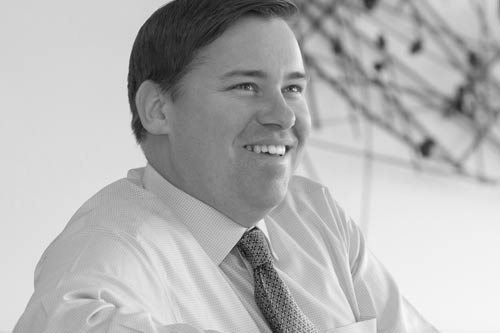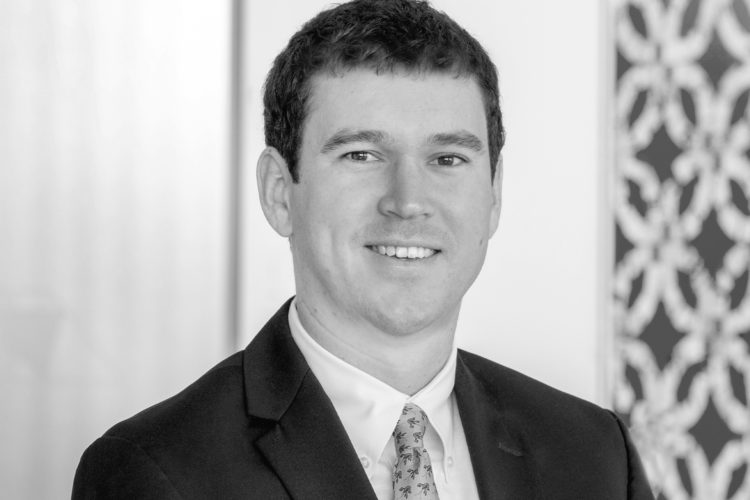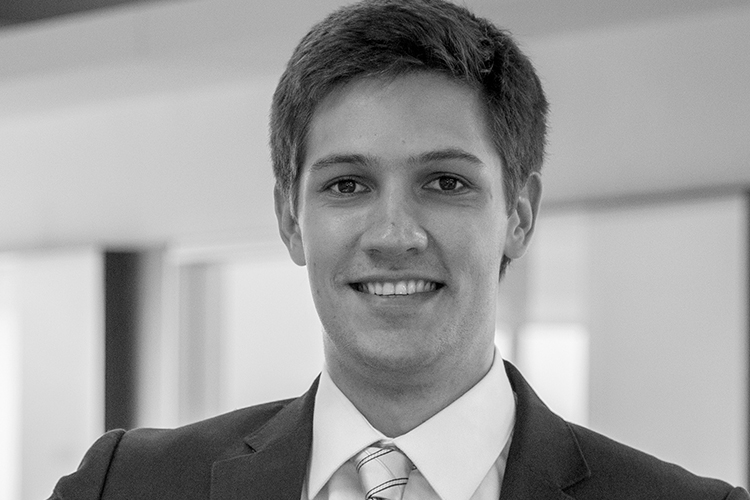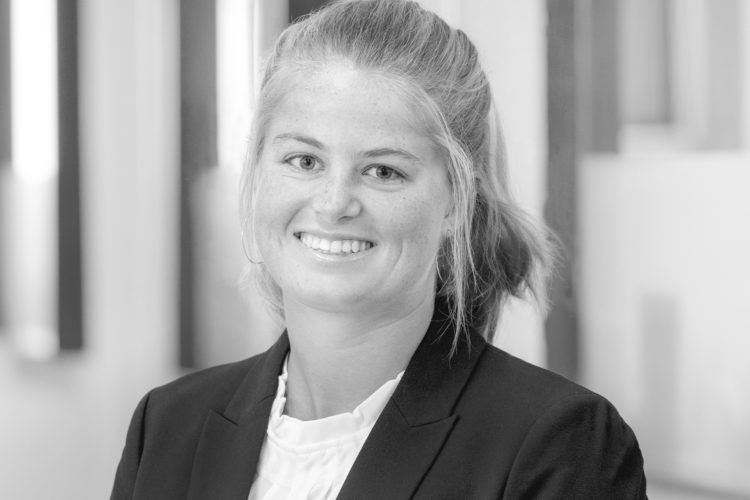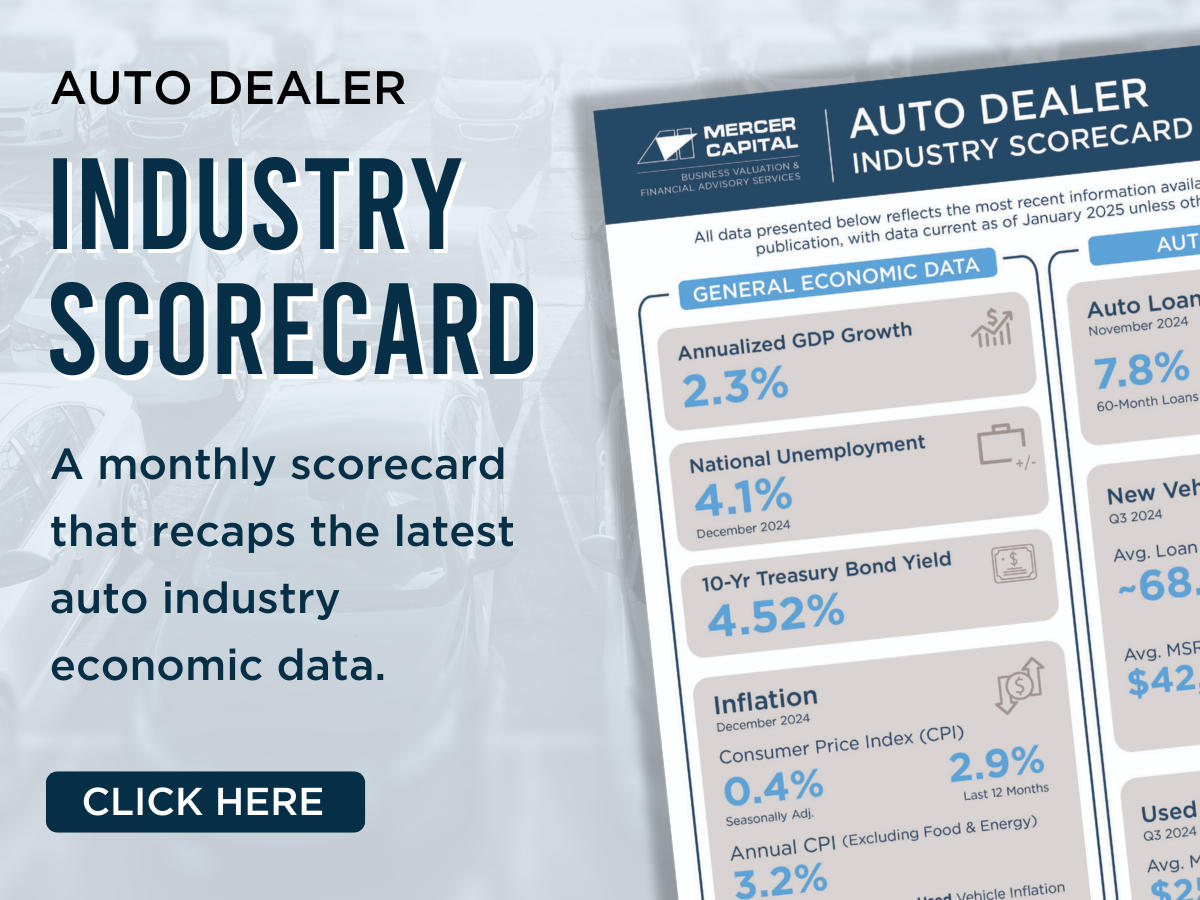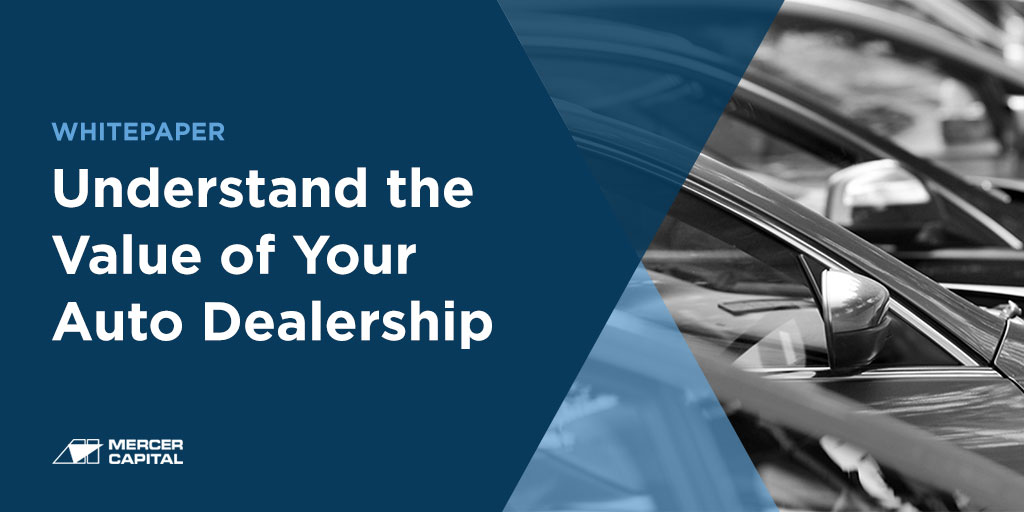Themes from Q2 2025 Earnings Calls
In this week’s post, we cover what auto retailer executives had to say during the Q2 2025 earnings calls. We noted three major themes from last quarter’s calls, which we detail below: tariffs, acquisitions, and fixed operations.
Theme 1: Tariff Headlines Pulled Forward Customer Demand and Raised Uncertainty
Unsurprisingly, tariffs were a primary discussion point among the publicly traded auto dealerships. Tariff headlines pulled consumer demand into April and May, leaving a choppy cadence in the quarter as consumers sought to make purchases at “pre-tariff pricing.,” This supported both volumes and GPUs, which softened through the end of the quarter. AutoNation indicated they were more cautious on M&A due to tariff uncertainty, and Asbury similarly noted its capex spend for both 2025 and 2026 would be dependent on tariff policies, while Group 1 deferred certain capital expenditure projects and has reevaluated some discretionary spending.
Executives emphasized that OEMs are likely to lean on incentive growth, trim-level adjustments, and pricing actions to maintain affordability as tariffs filter through the supply chain. The real test will come as 2026 model year vehicles hit dealer lots, bringing with them the first wave of meaningful OEM price adjustments. Unlike smaller, public auto groups that have less brand diversification, the publics noted that brands more impacted by tariffs will likely lead to stronger performance from their other brands less impacted by tariffs.
“We did note some pull ahead ordering during the quarter as a result of tariffs”
“We did note some pull ahead ordering during the quarter as a result of tariffs, as some customers looked to lock in lower prices. […] I think the initial tariff announcement in March certainly drove some activity. We saw activity spike probably into April and, to a lesser extent, in May and June. And obviously, we knew that our inventory that was non-tariff impacted at that point in time became more valuable. So there was no need to be giving those cars away, not knowing what the ultimate tariff impact was going to be. So, throughout the quarter in the US, our grosses were very stable. Certainly, they were the highest in April at $7,250. But then you look over the quarter between May and June, the spread between those other months was no more than $125. […] Some OEMs held off from shipping product as tariff negotiations took place limiting inventory of some brands. […] We had Audi, Porsche, and Land Rover kind of suspend wholesales for a period of 45 days in the second quarter as they were further looking to understand what the tariff outcome was going to be. That probably impacted our Porsche business the most. If you look at that brand, our EBT was down 9% in the second quarter, whereas year-to-date we’re up 1%. And that certainly hurt our mix. But that wholesale from those brands now is flowing again, so it was a short-term impact”
– Richard Shearing, COO – North America, Penske Automotive Group
“Second quarter results benefited from an increase in consumer demand in April and early May, which we expect was the result of customers buying in advance of anticipated tariff-driven price increases. […]We continue to work closely with our manufacturer partners to understand the impact of tariffs on manufacturer production and pricing decisions and the resulting impact tariffs may have on vehicle affordability and consumer demand later this year. To-date, we have not seen a material impact on vehicle pricing as a result of tariffs, but that could change as the model year 2026 vehicles begin to arrive at our dealerships late in the third quarter.”
– David Smith, Sonic Automotive, Chairman & CEO
“Expectations remain that new and used vehicle GPUs could elevate a bit as inventories tighten from imposed tariffs. […] We recognize our consumers are under pressure from car prices and other cost which have outpaced wage growth and higher interest, virtually double the rates we saw just a few years back. […] They’re just announcing 2026 contenting and some in pricing and some are still waiting to see what happens with the tariffs […] What we believe will happen is you will see OEMs play with trim levels, contenting, repricing price walks between grades, things like that to optimize margins and reduce the impact of the tariffs. […] Standard equipment may become optional in the future in order to keep the base car more competitively priced.”
– Daryl Kenningham, Group 1 Automotive, President & CEO
“The 2026 model, when you think about the OEMs going through the transition right now and this has been going on since the end of the first quarter. They’ve had plenty of time to strategize and make the necessary adjustments that are going to come down the pipeline. But from a production standpoint, it takes time to really adjust the parts and the suppliers. So, I do expect that in the 2026 model, there will be adjustments necessary to adjust for the tariff, but it will take some time when it comes down to the packages and the options that might be available to adjust that accordingly with the suppliers.”
– Daniel Clara, Asbury Automotive Group, COO
“With a broad product mix, we are well positioned to serve customers across all segments and affordability levels”
“Our OEM partners have responded nicely, maintaining affordability and price stability. With a broad product mix, we are well positioned to serve customers across all segments and affordability levels […] When we think about tariffs, we go back to affordability … manufacturers are going to have to respond. We continue to believe that incentives are going to have to grow again. […] As a side note for the quarter, incentives were only up about a 0.5%. They went to 6.5% of the price of a vehicle from 6% in the previous quarter. […] The most important thing is our manufacturers are all competing to sell cars. So it’s important to keep that in play. And only about half of the vehicles that we sell on a new car basis are being impacted by tariffs, okay, the rest are not. So when we think about the remaining half, what happens? I believe that manufacturers have already begun to either de-content cars or not charge for other upgrades.”
– Bryan DeBoer, Lithia Motors, President & CEO
“I know tariffs continue to be top of mind, and apart from the volume shifting, we saw limited additional impact in our Q2 results from tariffs. MSRP and invoice prices have been stable, and the June CPI report showed continued modest month-over-month declines in new and used vehicle pricing. We do expect the ongoing dialogue between our OEM partners and the US administration to result in clarification, and of course, finalization of the auto tariff structures in the coming periods. Now, this process also includes our OEM partners’ full evaluation of the supply chain footprint and planning to optimize tariff efficiency and to establish their forward pricing structures. We believe the objective of maintaining market share, particularly in critical segments, will [balance] equally with a desire to offset any new tariffs. And as I’ve said previously, we expect that AutoNation to some extent will be cushioned for many new tariffs by a cross-shopping effect whereby demand for non-impacted or lesser impacted brands and models will potentially supplant those for more effective counterparts. […] It’s good to see that we’re seeing certainty in some tariff deals. That will translate to more transparency in terms of the OEMs’ actions and what they’re doing. We’re still a little bit uncertain in that area, particularly as we go into a model year changeover, and not just on new vehicle price, also on parts prices.”
– Mike Manley, CEO, AutoNation
Theme 2: A Disciplined Approach to Acquisitions, Prioritizing Current Markets to Achieve Scale
The publics reinforced a disciplined approach to acquisitions—favoring bolt-ons in markets where they already enjoy scale and density. Instead of chasing new geographies, management teams highlighted portfolio optimization and targeted buys that strengthen existing footprints and yield higher returns. Notably, two of the six publics (AutoNation and Sonic) had non-cash write-offs in Q2 from prior acquisitions.
“We continue to actively explore M&A opportunities to add scale and density in our existing markets. […] I think, scale and territory as well. We have a very clear picture of the density we want in marketplaces where we can really subtract the biggest benefit from the processes and the scale that we bring. So we’re very, very focused on tuck-ins in those marketplaces to continue to unlock those synergies that I think are much, much more reliable in terms of delivery after M&A.”
– Mike Manley, CEO, AutoNation
“I think Ferrari was kind of a special one when you think about that brand, we’re their largest dealer in the world, and we had the ability to have the house dealership next door [which] was key. But as we look at these, we want to be sure that we can cut things in where we have scale, look at markets, and we’re going to be prudent as our peers have been.”
– Roger Penske, Chairman and CEO, Penske Automotive Group
“We will continue to be acquisitive, but we are also being very disciplined in valuing acquisitions”
“We acquired three dealerships in the quarter, further strengthening our partnership with Mercedes-Benz, Lexus and Acura. These dealerships expand existing footprints in Austin, Texas and Fort Myers, Florida, adding more scale on these proven markets consistent with our cluster strategy. […] We will continue to be acquisitive, but we are also being very disciplined in valuing acquisitions, engaging only in deals that we feel provide long-term value for Group 1 shareholders. […] I think, in the next few years, there will be larger ones [like the Asbury acquisition of Herb Chambers]. […] And up to right now, the year has been fairly quiet because of the [tariff] uncertainty, it feels like in the last couple of weeks there’s a little more activity.”
– Daryl Kenningham, President & CEO, Group 1 Automotive
“With a disciplined approach, we continue to target high quality assets in the US that strengthen our network, especially in the Southeast and South Central, where population growth and operational profits are the highest. We aim to acquire at 15% to 30% of revenue or 3 to 6 times normalized EBITDA, with a 15% minimum after-tax hurdle rate. Our track record reflects a 95% success rate of above target returns. […]But again, we don’t flex on pricing. We act when there’s opportunities that make a good ROI sense. […] So, this is a pretty easy roll-up strategy and we believe the market will come back to us as profits begin to normalize, which they’ve done nicely. […] We don’t have blips in terms of how we buy and how we operate because we didn’t pay based off COVID level earnings. We don’t have write-offs as two of our peers just had.”
– Bryan DeBoer, President & CEO, Lithia Motors
“Based upon the franchise laws in the different states and the economics in California, we just see there’s better investments and better returns in other states. […]Size and scale matter to us to a certain degree. Buying a store in a smaller state that has $30 million or $40 million in revenue per rooftop is just something that doesn’t interest us. We try and look at 10-year economic outlook, so markets that we’re in, what the franchise laws are and all that kind of stuff. And we think that’s what helps our portfolio keep the SG&A as tight as it is. We’re not hyper-focused on growth as a top line revenue growth, but really being strategic about the capital allocation, where we’re buying stores, what our returns are for our shareholders and making sure that we’re doing it thoughtfully and building for the future.”
– David Hult, President & CEO of Asbury Automotive Group
“It goes back to what I talked about in terms of market and densification in the market. We know an AN USA [AutoNation’s used only retail locations] is additive once we’ve got a certain amount of density, and we know that if we have AN USA, that’s a long way away from any supporting businesses, it’s a very, very tough business. So what we’ve done now, many years ago we had this big growth forecast, which I talked about in the past, and we’ve moderated that, you’re going to see additional openings of AN USA businesses this year. It’s going to be much, much more deliberate. And you will see from where they are opening that it fits into that pattern that I talked about.”
– Thomas A. Szlosek, AutoNation, CFO & EVP
Theme: Fixed Operations Performed Well as Variable Operations Remain Volatile
Service and parts delivered record revenue and gross profit. Warranty work was a clear tailwind, customer pay remained solid, and margins widened with better technician utilization, pricing, and mix, pushing fixed absorption higher. As front-end gross profit per unit normalizes, aftersales increased its share of total gross profit and provided a more stable earnings base. The publics have seen improvements due to their previous investments in hiring more technicians which were in short supply in recent years, and executives noted there is room to take more market share in aftersales.
“We continue to be bullish on the long-term trajectory of our parts and service business”
“Our same-store parts and service gross profit was up 7% in the quarter. We generated a gross profit margin of 59.2%, and our fixed absorption rate was over 100%, an important benchmark for the strength of the business. Customer-pay gross profit was up 7% with warranty gross profit higher by 16% or 9% on a combined basis. We continue to be bullish on the long-term trajectory of our parts and service business. We believe the continually aging carpark and the increasing complexity of modern vehicles mean our stores are well-positioned to capture future service growth. The average age of a passenger car on the road is 14.5 years old and the average truck is nearly 12 years old. Additionally, recent and upcoming models have more technology and innovative powertrains, which should create opportunity for our service departments for years to come. […] We feel comfortable with the mid-single digits that we have been discussing as we move into the second half of the year. And we have the throughput in the stores. Obviously, the bay utilization, we have opportunity to grow that as well. So, we feel comfortable with that measurement and continue to have and push forward as we go into the second half.”
– Daniel Clara, Asbury Automotive Group, Chief Operating Officer
“Aftersales represents nearly one-half of our gross profit. The business continued its revenue and margin momentum, and gross profit was once again a record for AutoNation. Revenues were up 12% year-over-year on a same-store basis, with increases in customer pay, it was up 10%, warranty up 25%, internal work up 14%, and wholesale up 8%, all offsetting a 6% decline in collision revenue as that industry has struggled to offset a declining proportion of repair to replace insurance decisioning. Aftersales gross profit increased by 13% on a same-store basis from a year ago. The increase was driven by a 7% increase in the volume and content of repair orders, and a 5% increase in the gross profit per repair order. For the second quarter, our reported aftersales gross margin rate was 49%, up 100 basis points on a total store basis from a year ago, reflecting improved parts and labor rates, higher tech efficiency, scaled benefits and higher value orders. We continue to develop and promote our technician workforce. As Mike mentioned, the quarter-end technician head count was up 3% from a year ago on a same-store basis, and our technician efficiency continues to improve. We expect our aftersales business will grow roughly mid single-digits each year. […] As we’ve said in the past, we have plenty of physical capacity and we’re continuing to drive the technician workforce up as well.”
– Thomas A. Szlosek, AutoNation, EVP & CFO
“In the quarter, our aftersales gross profit was up 14.3%, customer pay revenue was up 13.6% and warranty up 31.9%. While we certainly benefited from an easier comp versus the June 2024 CDK event, our aftersales business was strong throughout the quarter. And we continue to believe that the potential of the aftersales business warrants additional investment[…] We’re also evaluating our collision footprint and repurposing capacity as that segment of the industry continues to decline. […]What we are focused on is trying to drive more car count, especially since we have 8% more technicians to be able to accommodate it. […] A key to growth in the next three years in aftersales is us reaching deeper into the owner base in terms of people who have owned their cars longer. And we have to be able to increase our share of that market, so call it four-plus years of ownership and we need to be able to reach into that market deeper, penetrate it deeper, increase our penetration there, increase our spend there. We’re looking at our make sure our labor rates are attractive to that customer segment. […] Generally at Group 1 how we how we look at it, a technician, they’re worth about $15,000 in gross profit per month average across our brands, some brands it’s more, some brands it’s less. But when we can put a technician in a stall and have them work for a month, that’s another $15,000 in gross profit. And that’s how we kind of look at our cost. We look at the cost of not having a technician rather than the cost of what it costs to acquire a technician.”
– Daryl Kenningham, President & CEO, Group 1 Automotive
“Aftersales was once again a key earnings driver. Same-store aftersales gross profit grew 8.5% year over year helped by solid momentum in both customer pay and warranty work. Warranty remains a standout, with gross profit up 21.9% on elevated OEM service activity and higher technician productivity. Aftersales [contributes] more than 60% of our company’s net income. […] A lot of [aftersales outperformance is] being driven by customer pay and some by warranty. I would say that there’s slight impacts from tariffs, but most manufacturers have controlled their pricing on parts as well. Now, going forward, there may be implications there, but we didn’t see impact from tariffs at any scale.”
– Bryan DeBoer, Lithia Motors, President & CEO
“We’re going to continue to see the benefit in the fixed ops department”
“Same-store service and parts revenue increased 7% and related gross profit increased 9%. Same-store gross margin increased 90 basis points. Customer pay gross was up 6% and warranty was up 24%. We have approximately 6,000 service bays and 5,800 technicians, and our technician count is up 2% from June of last year. While our service and parts revenue and gross profit is at a record level, we continue to focus on driving higher utilization of our bays and increasing fixed cost absorption. […]I think there’s enough customer demand that even if these recalls in the warranty as a percent of our total repair orders goes down, when you look at the car park being 12 to 13 years of age, average mileage being close to 70,000 miles, we’re going to continue to see the benefit in the fixed ops department. And then I think with some of the initiatives that we’ve undertaken relative to shop load, operating hours, shift schedules, those are all paying benefits as well. […] I think it’s going to take a while for that car park to adjust. You look at the vehicles we’re selling today or servicing today, they’re almost 6.25 years of age on average and that’s up from 5.6 in 2019. And with the SAAR continuing to struggle to find a new high watermark, I think, I see fixed operations remaining strong.”
– Richard Shearing, Penske Automotive Group, COO – North American Operations
“Our fixed operations gross profit and F&I gross profit set all-time quarterly records, up 12% and 15% year over year. […] These high-margin lines continue to increase their share of our total gross profit pool, approaching 75% in the quarter. Same-store warranty gross profit was up 34%, and customer-pay gross profit grew 9%.”
– David Smith, Sonic Automotive, Chairman & CEO
Conclusion
At Mercer Capital, we follow the auto industry closely to stay current with marketplace trends. These give insight into the market for a private dealership, which informs our valuation engagements. To understand how the above themes may or may not impact your business, contact a professional at Mercer Capital to discuss your needs in confidence.
 Auto Dealer Valuation Insights
Auto Dealer Valuation Insights 



